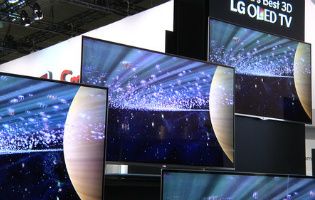Regular listeners to our weekly TechRadio podcast will know all about 3D in the home – for simplicity let’s call it H3D. Over the past five years we discussed it as an emerging technology, a mature technology and, this year, an industry folly. It’s not that we’re modish, it’s that H3D’s stakeholders in manufacturing and media failed to address the three ‘c’s of cost, convenience and content that have defined the format wars of the last 30 years. Where 3D in the cinema – C3D for our purposes – has proven popular as a premium offering for multiplexes, the same enthusiasm has not crossed over to H3D where consumers don’t have massive screens with digital projection, cutting-edge sound systems and a, most import, a communal viewing experience. C3D is popular because it delivers on all those fronts and viewers haven’t grown tired of paying the extra €2 or €3 to catch a summer blockbuster in a prime time slot. Would anyone care tomorrow if C3D disappeared? I have yet to meet anyone who said it enhanced their enjoyment of a story.
Although we’re stuck with C3D for the foreseeable future, the rules for home entertainment have always been different, the assumption H3D would follow the same path as C3D has proven disastrous. In the video format war of the early 1980s, VHS (developed by JVC) smashed (Sony’s) Betamax as it was cheaper to produce and better manufacturer support. In the 90s, DVD beat VHS without resistance by delivering superior quality at comparable prices at a fraction of the size of a video cassette with broad manufacturer support.
In the noughties, Sony’s Blu-ray and Toshiba’s HD DVD echoed the struggle of 20 years previous, only this time around it was content deals via Sony’s industry partnerships, not demand and price, that carried the day. However, consumers haven’t taken to Blu-ray owing to higher prices, limited selection and changing viewing patterns in favour of on-demand services delivering mostly standard definition content. With home H3D dependent on Blu-ray adoption its best is a subset of a minority interest format. And that’s before we get to the hardware.
Manufacturers have spent the past four years extolling the virtues of H3D, treating it as an inevitable evolution of home cinema systems, however the sales of 3D TVs have proved unconvincing. Studios are apparently reluctant to support H3D as it would detract from C3D revenue and Internet-connected TVs with direct access to catch-up and on-demand services are proving far more popular and cost-effective. And, of course, there is the issue of having to wear expensive active shutter glasses to get the best H3D picture.
Panasonic, Samsung, Sony and LG still promote 3D sets on their websites but the current slate of offline advertising campaigns has put the focus on picture quality and better user experience through gesture control and Internet connectivity. Sony, however, is looking beyond H3D to refocus on picture quality: ultra-HD – or 4K – TVs.
However, the final blow to H3D was delivered last week when broadcasters ESPN and BBC decided they would no longer be producing 3D content. Sky’s commitment remains but with no further players committing to broadcast the content end of the argument seems to be wrapped up.
Overpriced and underserved, H3D will be seen as a failure driven by industry hype over consumer demand. Will we see the same pattern with HD and 4K over the next few years? Let’s see how many lessons have been learned this time around.







Subscribers 0
Fans 0
Followers 0
Followers